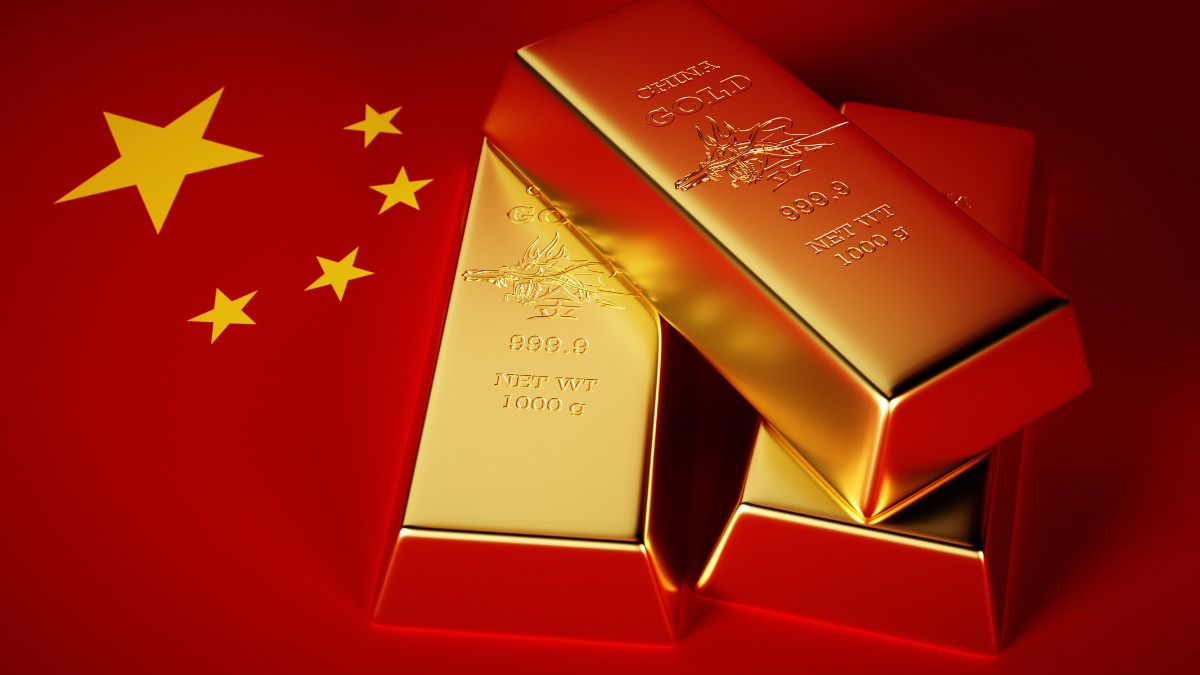Monsters of Rock: Gold continues to gain… without China’s help

Pic: Getty Images
- Gold continues to rise, without China’s assistance
- Iluka, Metals X report
- Miners post massive day on ASX
Chinese central bank gold buying and investor demand had been touted as the new driving force for gold as eastern economies look to wean themselves off the US dollar.
But high prices and economic struggles look to have put paid to that as the People’s Bank has paused purchases for three straight months and investor interest drops.
It’s all a bit confusing since the yellow metal remains well out ahead of other commodities this year, rising another 0.7% overnight to US$2516.30/oz ($3729/oz in Crocodile Dundee dollaridoos).
Hopes of US interest rate cuts are being pointed to by analysts.
“Gold rose amid expectations of easing monetary policy ahead of the Jackson Hole symposium,” ANZ’s Madeline Dunk, Brian Martin and Daniel Hynes said.
“This was despite signs of weaker physical demand in China. Imports of the precious metal in July fell 24% to 44.6t, the lowest level in more than two years.
“That follows an even sharper decline in June, when shipments plunged 58% from the previous month. This suggests higher prices and a weak economy have weighed on appetite from Chinese buyers.”
But there have been positive signs for copper producers from the Chinese market, with prices back above US$9000/t this week.
“The red metal did find some support from data showing signs of a rebound in demand in China. Exports of unwrought copper and products fell 40% m/m in July while the Yangshan premium has also rebounded amid a fall in stockpiles on the Shanghai Futures Exchange,” ANZ’s research scribes said.
“The rest of the base metals complex gained, led by aluminium. The lightweight metal has gained the interest of investors following a sharp correction earlier this year. Also supporting prices is China’s surprising growth in imports despite robust domestic production. China brought 129.9kt of aluminium in July, up 11.5% y/y, customs data showed.”
Reports continue
Iluka Resources (ASX:ILU) and Metals X (ASX:MLX) were among the producers on the reporting calendar today, along with services players Lycopodium (ASX:LYL) and MLG Oz (ASX:MLG).
Mineral sands producer Iluka revealed a 15% drop in revenue to $606m for the June half-year, with EBITDA down 29% to $252m and profit 34% lower to $134m.
Free cash flow was negative $47m, but ILU still lifted its interim from 3c last June to 4c this year.
MD Tom O’Leary says Iluka sees improving optimism in the pigment industry for next year, a key end market for its rutile and synthetic rutile titanium dioxide feedstocks.
“Our ability and willingness to hold inventory enables us to prioritise the true value of the company’s products in an evolving marketplace,” he said.
“By building ilmenite inventory, Iluka has minimised mining unit costs and ensured feedstock is available to underpin a potential future restart of SR1 – our swing production asset for synthetic rutile.
“This is in the context of a pigment industry that is undergoing structural change, including the implementation of tariff arrangements, as well as consolidation of ownership and the closure of some higher cost facilities. There is growing optimism for the pigment industry in 2025.”
O’Leary, who complained of China’s weaponisation of the rare earths market at the company’s AGM in May, has put a $1.7-1.8bn pricetag on the construction of its Eneabba refinery in WA.
But comments today put the heat again on the Federal government to commit further on top of a $1.25bn loan announced in 2022 after cost blowouts.
“At Eneabba, we have struck a prudent balance of progressing critical path works while funding arrangements with our strategic partner, the Australian government, are being concluded,” O’Leary said.
“Continuation of the Eneabba development is contingent on risk sharing with the Australian government. Iluka will provide an update on the company’s rare earths business in H2 2024.”
Metals X was over 5% higher after announcing a 52% lift in revenue from its Renison Bell tin mine in Tasmania to $94.98m, with profits 23% up to $14.87m. The 50% owned mine churned out 4779t of tin metal, 11.84% up on the first half of 2023, with higher tin prices to boot.
No dividends but $376,000 was spent on buybacks, with $181.65m in cash, up from $124.03m at June 30, 2023.
EPCM experts Lycopodium lifted NPAT from $46.8m to $50.7m, posting a 40c final dividend to bring its full year dividend to 77c per share.
EBITDA and revenue was also higher year on year in FY24 to$77.1m and $348.9m. But a weaker cash position and negative response from investors saw its shares collapse 12%.
MLG shares rose over 2% as the minesite hauler lifted revenue 23.7% to $474.8m, EBITDA 58% to $55.3m and NPAT 1253.5% to $11m. Born in Kalgoorlie under the leadership of Murray Leahy, MLG has targeted the hot gold sector with new contracts at Gold Fields’ Granny Smith and Genesis Minerals’ Leonora operations.
It was a watershed day for the broader materials sector, which rose 1.72% as the US dollar dropped to its lowest level this year and Chinese stimulus hopes rose.
Making gains
Lynas (ASX:LYC) (rare earths) +7.4%
Liontown Resources (ASX:LTR) (lithium) +6.3%
Mineral Resources (ASX:MIN) (iron ore/lithium) +5.2%
IGO (ASX:IGO) (lithium/nickel) +5%
Eating losses
Lycopodium (ASX:LYL) (engineering) -12%
Mader Group (ASX:MAD) (mining services) -5.8%
Imdex (ASX:IMD) (drilling services) -4.2%
Yancoal Australia (ASX:YAL) (coal) -4%
Related Topics

UNLOCK INSIGHTS
Discover the untold stories of emerging ASX stocks.
Daily news and expert analysis, it's free to subscribe.
By proceeding, you confirm you understand that we handle personal information in accordance with our Privacy Policy.








